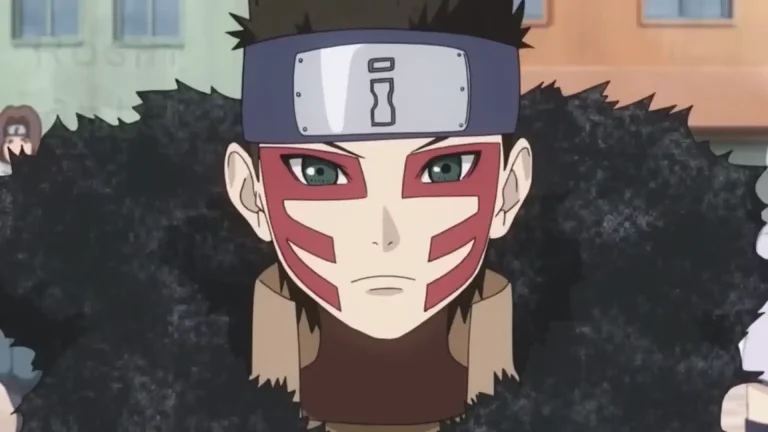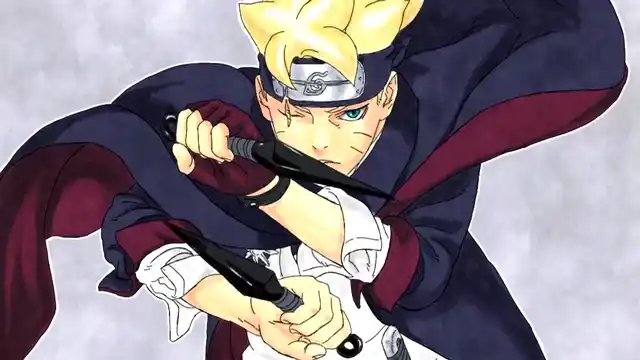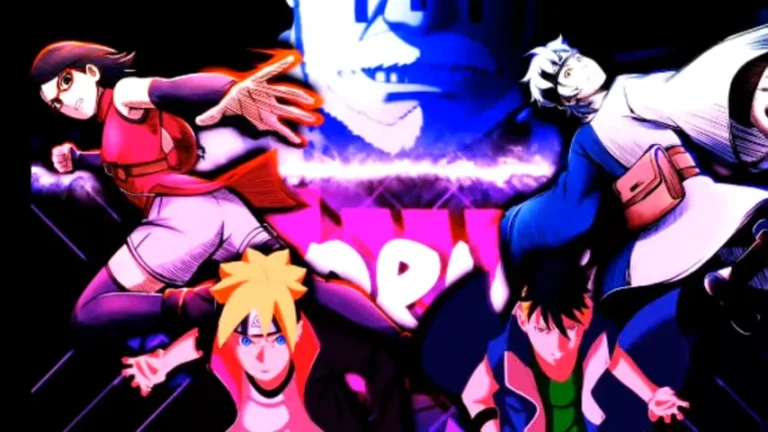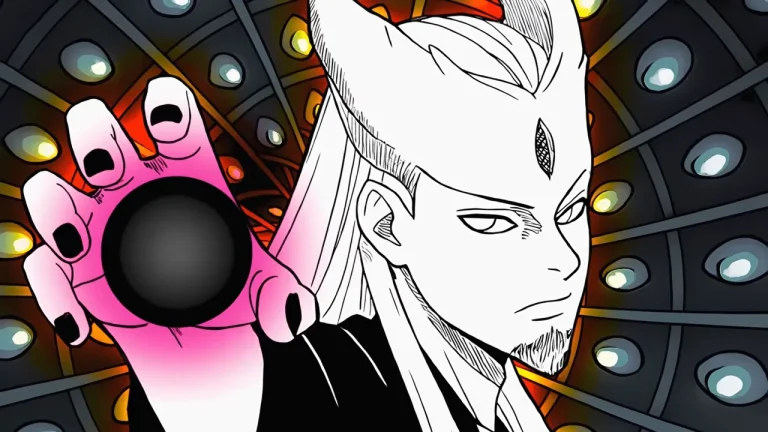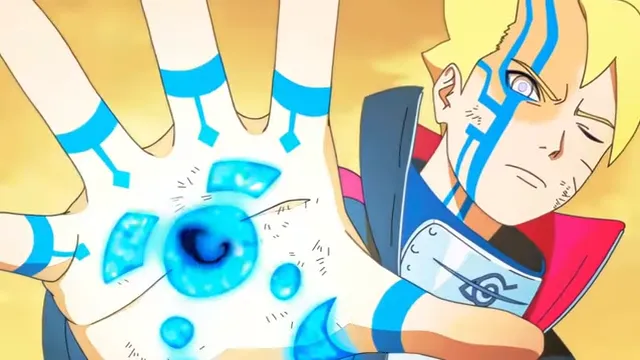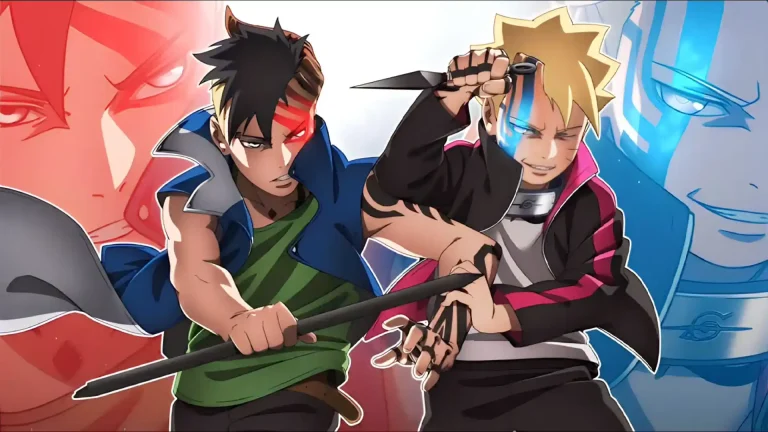The Mystery Behind the Strength of Boruto’s Ten-Tails and Its Divine Tree Shinju
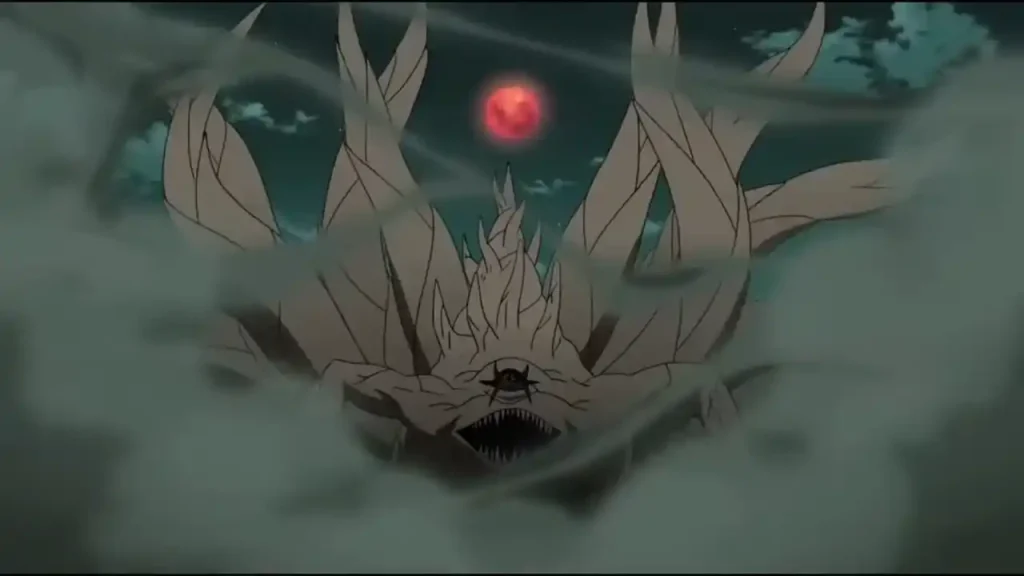
The Power of Boruto’s Ten-Tails Explained – Shibai, Isshiki, and Code’s Chakra
The Ten-Tails has always been a terrifying entity, with the power to reshape the land, create cataclysms, and display chakra levels comparable to the size of a small planet. That is no simple feat. What’s crazy about this is that the Ten-Tails isn’t even the strongest. Boruto’s manga introduced a new Ten-Tails, referred to as a juvenile, and there’s a reason for that. What’s most important is that this Ten Tail was later able to create entities rivaling the power of characters stronger than Jigen—the same Jigen who far surpassed the power of Kaguya Ōtsutsuki, the same Kaguya who merged with the Ten-Tails from the original series.
So, if the Ten-Tails in Boruto’s Two Blue Vortex manga is considered a juvenile Ten Tails beast, why is it seemingly more powerful than Kaguya’s mature Ten Tails? The answer to that question is more complex because the Ten-Tails in Boruto’s manga aren’t necessarily more powerful than the original. Still, a component makes the shinjus able to produce a tad bit overpowered.
The basic concept of how the Ten-Tails acquires power is very simple. An Ōtsutsuki travels to a planet and plants a Ten Tails seedling, which then transforms into a Divine Tree after consuming an Ōtsutsuki. It then spreads its roots across said planet, absorbing all existing life forms, including the planet’s natural energy. This is important to note because the quality of said energy determines the potency of the chakra fruit the Ten-Tails produces, which also means that it determines how strong the Ten-Tails becomes.
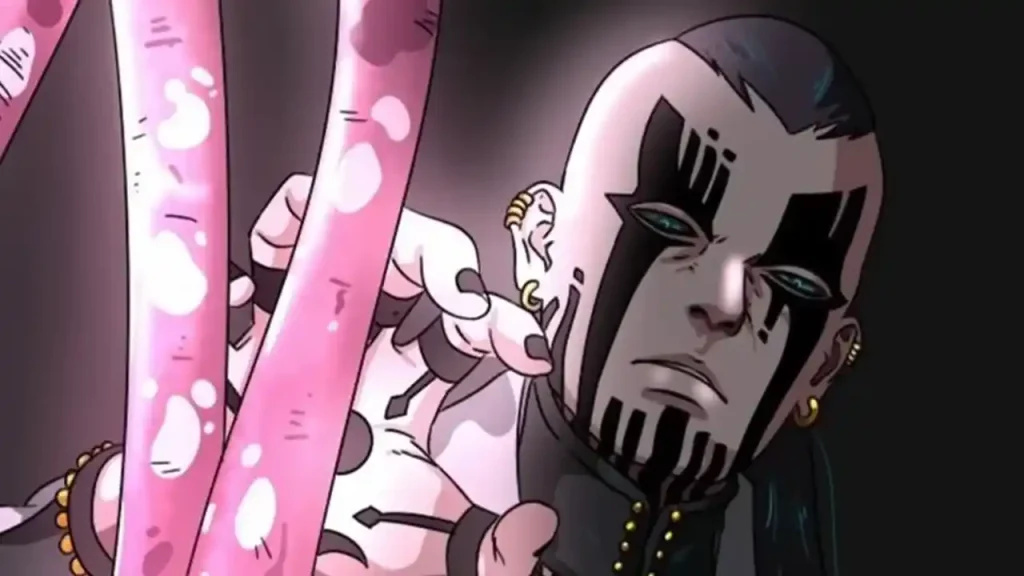
In the context of the original Ten-Tails, it consumed an Ōtsutsuki and absorbed enough energy from the planet to form a chakra fruit. It later merged with Kaguya herself before being divided into the nine bijuu by Hagoromo. This means that not only do the Ten-Tails in the latter half of Shippuden possess the power of the sacrifice of a Ōtsutsuki and the planet itself, but they also possess the power of Kaguya. Mind you, at this point in the series, it was already emitting power scaling to the size of a small planet, and that’s without the part of the Nine and Eight-Tails that resided within Naruto, the Fourth Hokage, and Killer Bee. This is the same Nine Tails that eclipsed the power of all the other bijuu combined while only having half its original power.
You’d think it couldn’t get any stronger than this, but it then gained half of the Nine-Tails and a huge portion of the Eight-Tails and even gathered more energy from the planet itself and its inhabitants through the Infinite Tsukuyomi. So, by the end of Naruto, the Ten-Tails were immensely overpowered. Still, at the same time, the characters who possessed the power of the Ten-Tails weren’t, well, at least in comparison to Boruto Uzumaki characters.
You see, it is widely accepted that fused Momoshiki scales above Kaguya, and the narrative also portrays that to be the case. Now, we can argue the case of base Momoshiki and Kinshiki, given their showing, which I think is a bit more arguable on an individual basis, but that’s not relevant because you have characters such as Jigen and Isshiki, who far surpass both of them in feats and narrative implications. If a character surpasses Jigen, for example, they must also surpass Kaguya, thus also surpassing the Ten-Tails Kaguya possessed.
This leads us to the shinjus introduced in Chapter 4 of Boruto: Two Blue Vortex. These beings were formed after the Claw Grimes Code created using the body of the Ten-Tails started to devour non-Ōtsutsuki, thus turning into failed mini Divine Trees, per se. This allowed them to hijack the powers and likeness of the person they ate, along with certain key characteristics. Now, you’d assume these guys would be relatively powerful, but not so much, given that the Ten-Tails they received their power from is considered a juvenile.
The reason why it’s called a juvenile is because it hasn’t consumed an Ōtsutsuki, which means that it hasn’t evolved into a Divine Tree, which also means that it hasn’t absorbed the life force of a planet—all the things Kaguya’s Ten Tails did twice. So, it was surprising when these entities could go toe-to-toe with Boruto himself. Mind you, Boruto scales greatly above Jigen. At the same time, in the base, he was able to bully No-Limiter Code, who’s also stated to have greatly surpassed Jigen’s combat power back in the original manga.
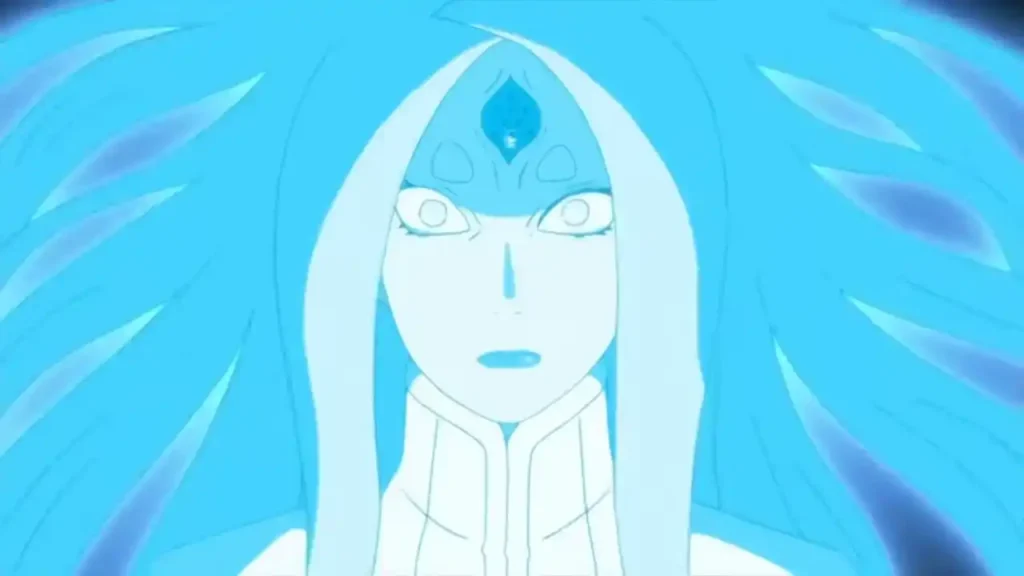
It’s widely debated whether Code surpasses Isshiki Ōtsutsuki as well, which would place Boruto above Isshiki in terms of power. The issue with this is that the manga made it a point to say that the cyborg surpassed Jigen, not Isshiki, multiple times. One could argue that they did that because Isshiki wasn’t a thing yet. Hence, the benchmark for the power system was Jigen at that time, but that still doesn’t explain why, post-Jigen and Isshiki, the writer still had Shikamaru saying that Code’s power should be below Isshiki Ōtsutsuki.
This comment has no other purpose besides the author reinforcing that Isshiki hasn’t been surpassed. From a storytelling perspective, the only other purpose this could have served was to prove Shikamaru wrong by having Code show that he isn’t below Isshiki, but that hasn’t happened. The next time we saw Code, he was getting bodied by base Boruto. Just before that, he got bodied by another cyborg, who was stated to be greatly above Jigen, not Isshiki. I don’t care either; Code could be stronger than Isshiki, which would have scaled Boruto. But the feats and statements so far don’t back up that notion.
That aside, the main point is that Boruto surpasses Jigen by beating an above-Jigen-level character. This also means that when you have the Bug Shinju tagging Boruto through multiple structures before he could dodge, tanking his lightning release, forcing him to escape using Flying Thunder God (FTG), and even asking Code for assistance, it means that this Shinju scale above Jigen as well.
Mind you, these are the feats from just the Bug Shinju, who stems from a normal dude with no powers. So, imagine Hidari, who stems from Sasuke Uchiha—the Sasuke—and even Jura, the literal embodiment of the Ten Tails. You don’t have to imagine because you’ve seen Hidari cancel out Boruto’s Rasengan on a good day, something you wouldn’t be able to accomplish without some level of relativity. Then, you have Jura himself, who two-pieced Karma Kawaki, no-diffed Himawari, and one-shot Boruto himself. So, it’s pretty clear where these characters scale in power.
But why? Well, it’s a combination of a few factors. As noted by Boruto in Chapter 6 of Two Blue Vortex, there’s a strong possibility that Code’s chakra affects them via the Claw Grimes. He also said that Code may not be an Ōtsutsuki himself, but he did get a Karma seal from Momoshiki, a lump of Ōtsutsuki essence. So, the Karma seal having some effect wouldn’t be a surprise.
Two things were confirmed here. One is that the Claw Grimes, and by the Ten-Tails and the Shinju, are indeed affected by Code’s chakra and Isshiki’s essence from Karma. This is very important because, for one, Code is confirmed to have been implanted with the cells of Shibai Ōtsutsuki in Chapter 13. This came in the form of Kashin Koji revealing that each member of Kara who received announced modifications from Amado had been implanted with Shibai’s cells. As a result, Code manifested Claw Marks, Daemon received reflection, and Eida awakened omnipotence—all of these abilities being Shibai’s shinjutsu.
Now, it didn’t just give them abilities, but it also increased their power levels, which is why characters like Delta were able to keep up with Six Paths Naruto, and Daemon was able to fold Unlimited Code. This also indicates that the power wasn’t distributed equally since some received more power than others. And, as you know, Code had limiters placed on him because his power surpassed Jigen’s, which means that the power that became a part of the new Shinju also surpassed Jigen. It doesn’t end there because it also states that they were affected by Isshiki’s essence.
Ōtsutsuki’s essence within Code’s Karma—and what does Isshiki’s Karma provide Code? Well, that’s raw power. So, the power from Isshiki’s Karma, along with Code’s own power that came from Shibai’s cells, heavily contributed to the strength of the new Shinju. This is crazy, by the way, since only one of those power sources would have been enough to surpass the likes of Kaguya, even while she was merged with the original Ten-Tails. But it doesn’t end there because there is another component.
As stated in Boruto Chapter 14, each Shinju reflected the chakra of the person devoured by the Ten-Tails and turned into a tree. This means that they also received power from the individuals consumed, which means that whatever Sasuke’s power level was at the moment of consumption also contributed to the strength of the Shinju. Now, it’s unclear if the power is evenly spread to every Shinju or if it’s concentrated in the Shinju who takes the form of the devoured individual. Either way, this power is something they’re able to draw from through the consumption of that person’s chakra.
In a sense, the Ten-Tails in Boruto isn’t stronger than the one from Shippuden. On a mechanical level, that wouldn’t make sense. It is a juvenile Ten Tails that hasn’t consumed a Ōtsutsuki or fed on a planet’s power. So, the real reason why the Shinjus that were created from the body of this Ten Tails are so overpowered is more due to the circumstances behind its evolution, which is a mixture of Isshiki’s chakra from Code’s Karma, Shibai’s power within Code’s body, and even the chakra of the consumed individuals.
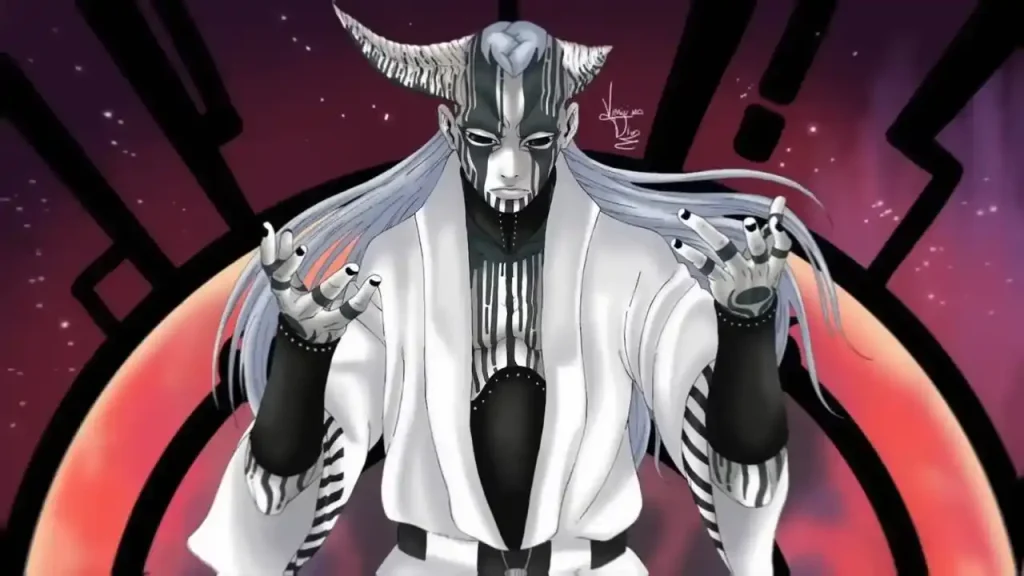
It’s also important to note that these power sources are part of these evolved entities, which doesn’t automatically make them equal to the person from whom the power stems. So, Shibai’s power being a part of these Shinjus doesn’t make them as strong as Shibai, and the same goes for Isshiki’s power. Code himself isn’t on Shibai or Isshiki’s level, even though he has a portion of their power. The key takeaway is that only a portion of that power was divided into over a thousand Claw Grimes, which are still alive, by the way. It’s similar to how Naruto shared his chakra with the entire Shinobi Alliance in the war. It made them significantly stronger, but they weren’t exactly on Naruto’s power level.
So, while one can—and I’m sure many will—make the argument that at least Jura, the embodiment of the Ten-Tails itself, is at Isshiki’s level, that doesn’t have to be the case. But it can be. Typically, when it comes to Shōnen, the next villain is always stronger than the one that came before them, at least 97% of the time. But in this case, it doesn’t have to be that way since the characters never actually eclipse Isshiki in power, aside from Baryon Mode Naruto, which no longer exists. So, the story can take a different route regarding the power ceiling if it wants to.
Now, with that in mind—which I think is almost certainly the main reason behind the power of the Shinju—what are some other possibilities? One would be the likelihood that this new Ten-Tails isn’t really a juvenile or wasn’t always a juvenile. You see, the Ten-Tails has one purpose: to consume the energy of a planet after consuming an Ōtsutsuki. But what happens after that process has been completed was never explained. This is very important because the size of the Ten-Tails is determined by the amount of power it holds, which is why it’s referred to as a juvenile. It does have ten tails, but it isn’t as big as the original Ten Tails.
By the way, this aspect is also reflected in the other Bijū. Kurama was noted to have significantly shrunk in size by the Third Hokage when Minato used the Reaper Death Seal to extract half of its chakra. The same thing happened when Naruto defeated the Nine Tails in Shippuden and extracted a portion of its chakra at that moment. You could also include that Kurama returned as a literal infant after all his chakra was burnt out due to Baryon Mode, but you could also argue that he looks like this because he was reborn. So, you know what? It’s fine.
Anyway, the point is that the extraction of power or chakra from a Bijū is directly tied to the size of said Bijū. We also saw that with the Ten-Tails drying up and reverting to the Gedo Statue form after it extracted its chakra and created the nine Bijū, and even the Ten-Tails in Borutodoing the same thing after Code did something similar to develop his 1,000+ Claw Grimes.
So, with that in mind—or with all of that in mind—it wouldn’t surprise me if Boruto‘s Ten Tails did consume an Ōtsutsuki once before and even absorbed the power of a planet. It then went on to form chakra fruits, which are a concentration of that power, which were then consumed by the Ōtsutsuki who planted it. This process could have been repeated over and over until the Ten-Tails didn’t have any energy left to create chakra fruits, which is why Jigen feeds on its remaining chakra using his Karma seal. This then caused the Ten-Tails to shrink over time since its chakra was being siphoned without a way to replenish it.
So, while the Ten-Tails decreased in chakra quantity over time, the potency of that chakra remained. This is why Jigen thought it useful to absorb that chakra before fighting Naruto and why the Shinju created by the Ten-Tails is so powerful. This makes perfect sense because the quality of power a Ten Tail can gain from absorbing the life of a planet is purely dependent on the quality of life on said planet and the amount of energy the earth produces.
It could simply be the case that whatever planet Boruto‘s Ten Tails devoured had a larger and richer population, or maybe the planet itself was merely bigger and generated more power, which in turn means that the quality of power it received from that planet is greater than what Naruto‘s Ten Tails took from theirs—especially since it didn’t devour all life on the earth or the planet itself.
The writer could go this route, and it makes perfect sense since we’ve already seen the Ten-Tails in Naruto revert to their previous forms, even after becoming a Divine Tree. So, anything is possible. Do you think the reason why the Ten-Tails is as strong as it is—or at least why the Shinju created by the Ten-Tails is so powerful—is more so due to Code’s Shibai’s chakra, or Isshiki’s essence in Code’s Karma seal? Or do you think the Ten-Tails is stronger for some abstract or abnormal reason? In Boruto: Two Blue Vortex Chapter 15, Gaara faces defeat, and Shinki sacrifices himself to protect him, becoming consumed by the Shinju tree. Boruto, now overpowered and emotionally detached, teams up with Kawaki to save the world, while Mitsuki’s looming takeover and the mystery of Kawaki’s true power deepen the plot.

